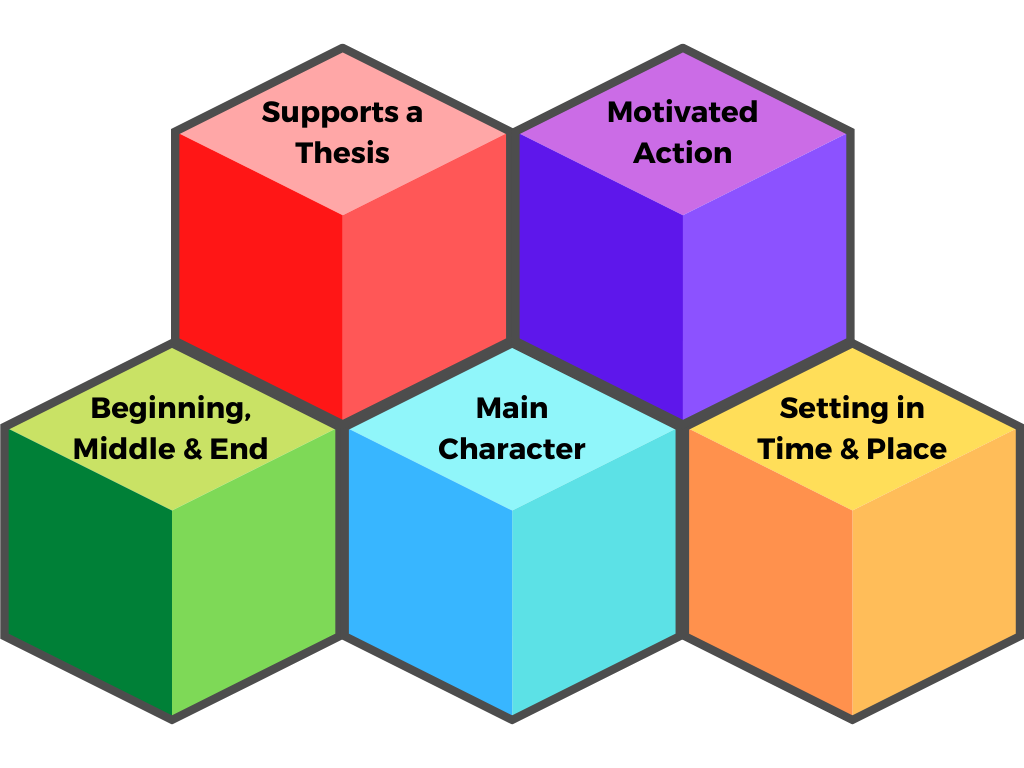19 Narrative
A narrative will need to:
- Describe a personal experience using sensory detail.
- Critically reflect on the learning experience.
- Communicate the significance of this experience to an audience.
What is this genre about? Narratives tell stories in clear, descriptive, chronological order and convey the significance of a person’s experience. Narratives have a plot, characters, action, and a theme. Most narratives are written about major events that follow a timeline and often have strong conclusions that help to resolve the conflict and reiterate the theme. Vivid and sensory details enhance the message of the narrative.
What are the expectations? Readers expect narratives to be focused in scope and have a specific purpose. Because readers are so familiar with storytelling in their lives, they expect to read detailed descriptions of specific scenes from a person’s experience and relate those experiences to a greater theme or point of significance. Writers can meet reader expectations by including vivid details about the experience and relating the narrative to something larger than itself.
What are the elements?
At a minimum, a narrative should include:
- A beginning, middle, and end
- A main character, perhaps others as well
- A setting in time and place
- Motivated (or caused) action
- Supports a thesis, controlling idea, or theme

Why is detail important? When writers use vivid and sensory detail to share a narrative, they help the reader connect to their story in meaningful ways. Some of the best narratives attend to most or all of our five senses (sight, sound, taste, touch, and smell). If a writer wants to convey to their readers their personal connection to a cherished family recipe, then they might describe in sensory detail what the freshly baked bread looks like, the sounds of their grandmother’s clamoring in the kitchen to prepare the bread, how the warm bread melts in your mouth at the first bite, how the bread springs back slowly when you press down on it, or the aroma that overtakes your house on a Sunday afternoon when the bread is finished baking. Most readers can relate to some or all of these details through various life experiences, which will help to pull them into the journey that the narrative takes.
Why does this genre matter? The reason we use narrative is because storytelling is the most natural way for us humans to communicate. Humans relate to each other through stories and therefore find stories incredibly interesting and persuasive. This genre matters because you will be asked to tell stories of your own experiences at work, in your life, and in learning situations. Narratives help us relate to one another and provide a way to understand our differences.
How do I organize a narrative?
The two most common styles of narratives are the “essay” and “short story” forms. The essay form has an introduction and conclusion that frame the key events of the story. Alternatively is in medias res, which is Latin for “in the midst of things.” This form works much like a movie or television drama, diving into a critical situation as it is happening in a chain of events. The narrative then continues sequentially, and any back-story is provided as flashback or explanation as the story evolves. Your instructor should identify the preferred style.
In either narrative style, the body of the essay is organized by key event or action. This is where inexperienced writers can get confused and ask when to begin a new paragraph. Paragraphs shift at changes in place or action. Dialogue needs its own paragraph, and each new speaker begins a new paragraph.
Narratives are sequenced in a variety of ways, most commonly chronological order. However, other sequences exist, including final event first, summary opening, and flashback. Place is also important in the narrative. Be sure to ground the event so that readers can picture what happened. If you experience a significant event but only explain “how x made me feel,” you have missed an opportunity to tell the story.
Do I create a thesis or a controlling idea for this genre?
To answer this question, you have to know your audience. What has your teacher suggested? Some teachers might expect to see a more argumentative thesis statement, but as you’ll see in the examples linked below, many narratives revolve around more of a controlling idea.
A controlling idea, sometimes called a theme, revolves around a central message to be imparted to the reader. You can think of a controlling idea like a memorable tagline. In a phrase or a sentence, the controlling idea gives the reader a new insight into a topic. However, you don’t want to overwhelm the reader with too many insights, which is why you should try to capture the controlling idea in one phrase or sentence that’s strategically placed in the title and alluded to in the beginning or end of the piece. Watch the video below or read the linked examples below the video to gain ideas about how writers craft controlling ideas that are memorable and teach the reader something new.
What are some examples of this genre?
“Narrative and Narration,” LibreTexts, CC-BY-NC-SA.
“Description as a Rhetorical Strategy,” LibreTexts, CC-BY-NC-SA.
